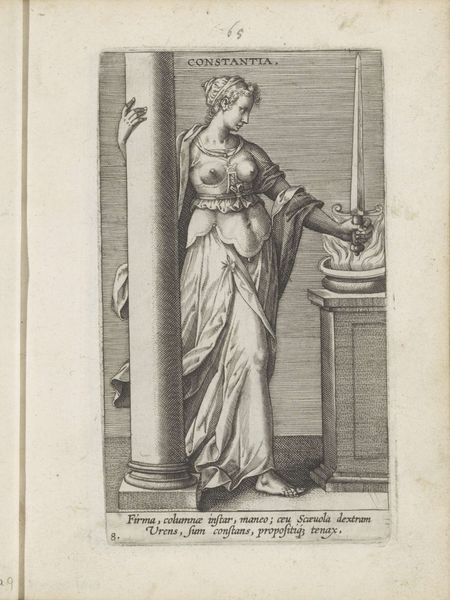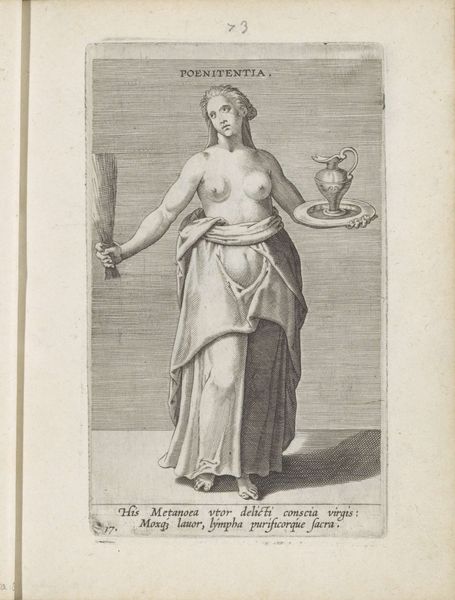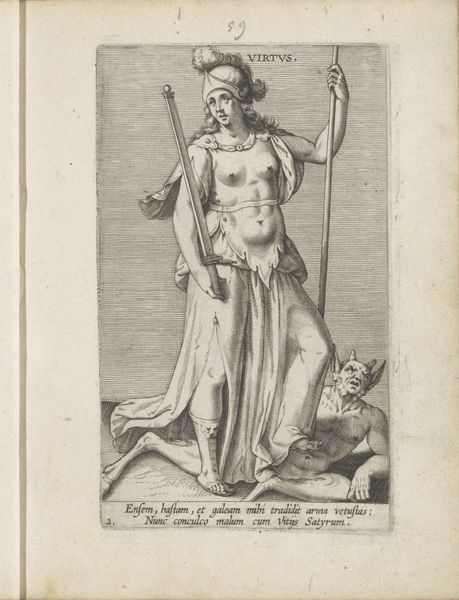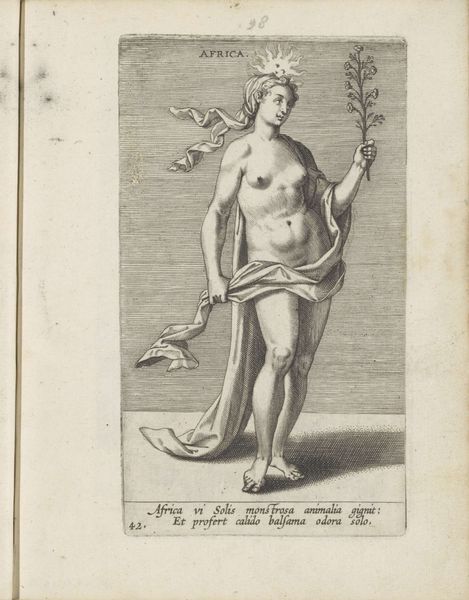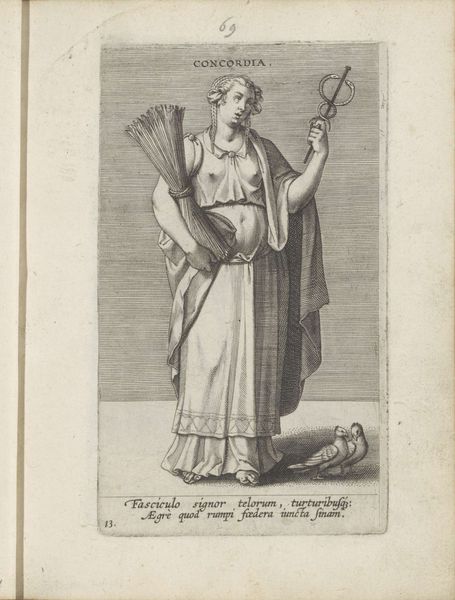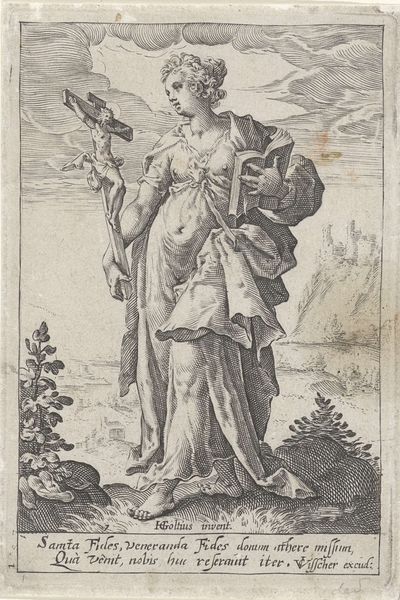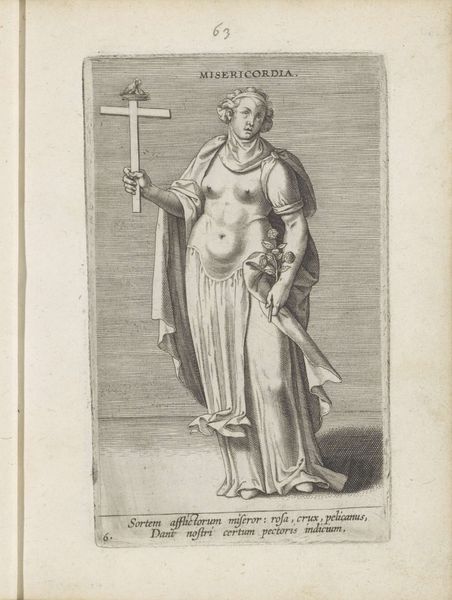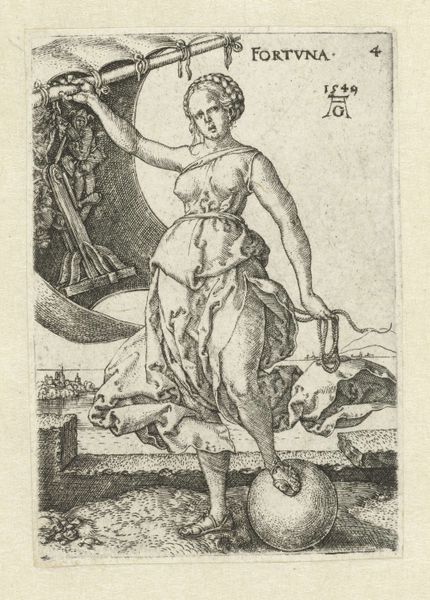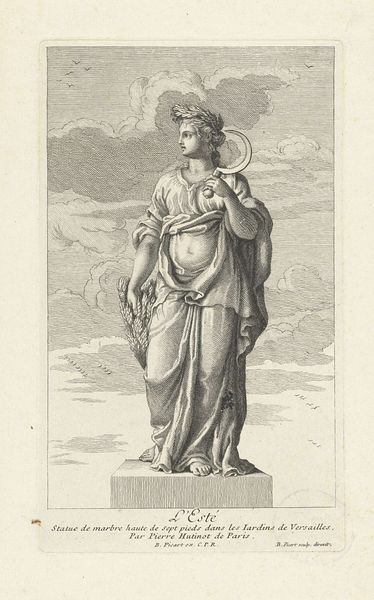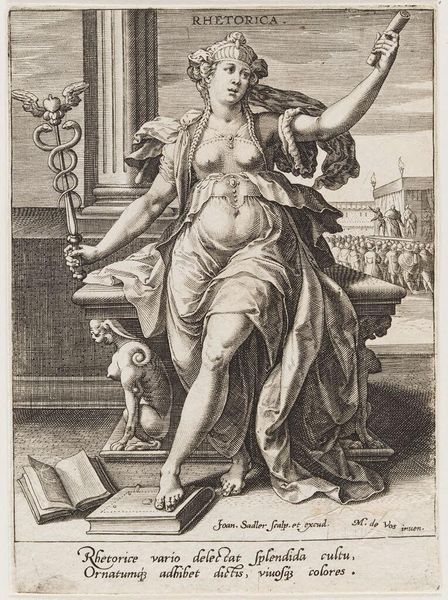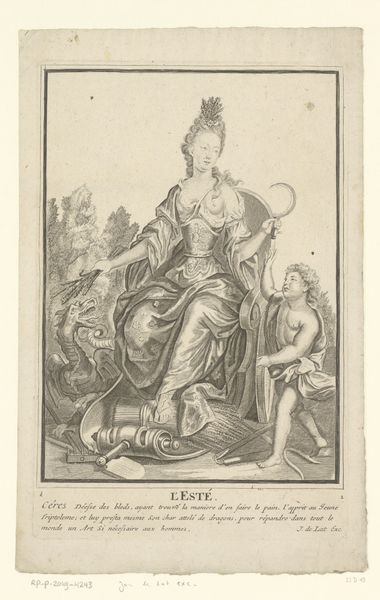
print, engraving
#
allegory
# print
#
mannerism
#
figuration
#
nude
#
engraving
Dimensions: height 152 mm, width 92 mm
Copyright: Rijks Museum: Open Domain
Curator: This engraving, entitled "Overwinning," which translates to "Victory," was created circa 1585-1590 by Philips Galle. It is currently held in the Rijksmuseum. What’s your initial take on it? Editor: There’s an immediate sense of power. The figure is imposing, strong even. There’s an intriguing play of light and shadow despite the limited tonal range of the engraving. Curator: As an engraving, it relies on a very specific labor process involving skilled metalworkers. The lines are not just representations, they are etched marks painstakingly carved and inked. And what's her social position allowing such artwork commissioning? Who had access to these images at this time, shaping social understanding? Editor: Agreed, the level of technical skill is certainly on display here; but even without the context you offer, I see a refined understanding of form and balance. Notice the positioning of her body. The laurel wreath in one hand, juxtaposed against what looks like palm fronds on the other—these design elements work together elegantly to emphasize this central figure. The contrast is superb. Curator: This print would likely circulate amongst elites and intellectuals. Engravings like these functioned as both decorative items, as well as tools for disseminating allegorical messages during the Mannerist period. Galle ran a large printmaking workshop; such prints are evidence of workshop practices. What implications arise through dissemination through reproduced form, in contrast to painting, say? Editor: It's fascinating how it encapsulates a specific moment of victory. The smoke under her foot is not a symbol, but also produced through acid to realize a mark, or burnish the surface for light. It creates depth but simultaneously asserts itself as line, shadow, etc. I think the formal clarity lends the work to function almost as a logo—or visual argument—promoting authority and order in a society in constant transformation. Curator: This kind of imagery clearly served specific patrons or audiences who engaged with ideas of power and authority, right? It reveals what materials and aesthetics they esteemed in this period, which allows us to understand these values across history. Editor: Ultimately, for me, its appeal lies in the convergence: material means of production intersecting with its success communicating those concepts. Thank you for your comments about that; together this allows for a deeper appreciation of its effect and production. Curator: Agreed; it also illuminates how those means shaped the art of this time.
Comments
No comments
Be the first to comment and join the conversation on the ultimate creative platform.
